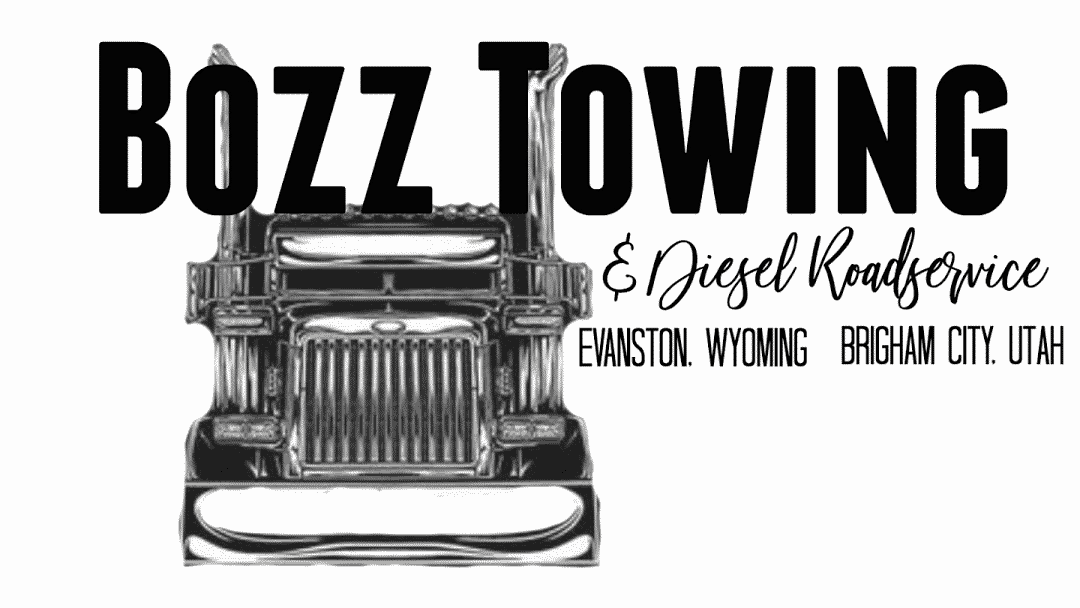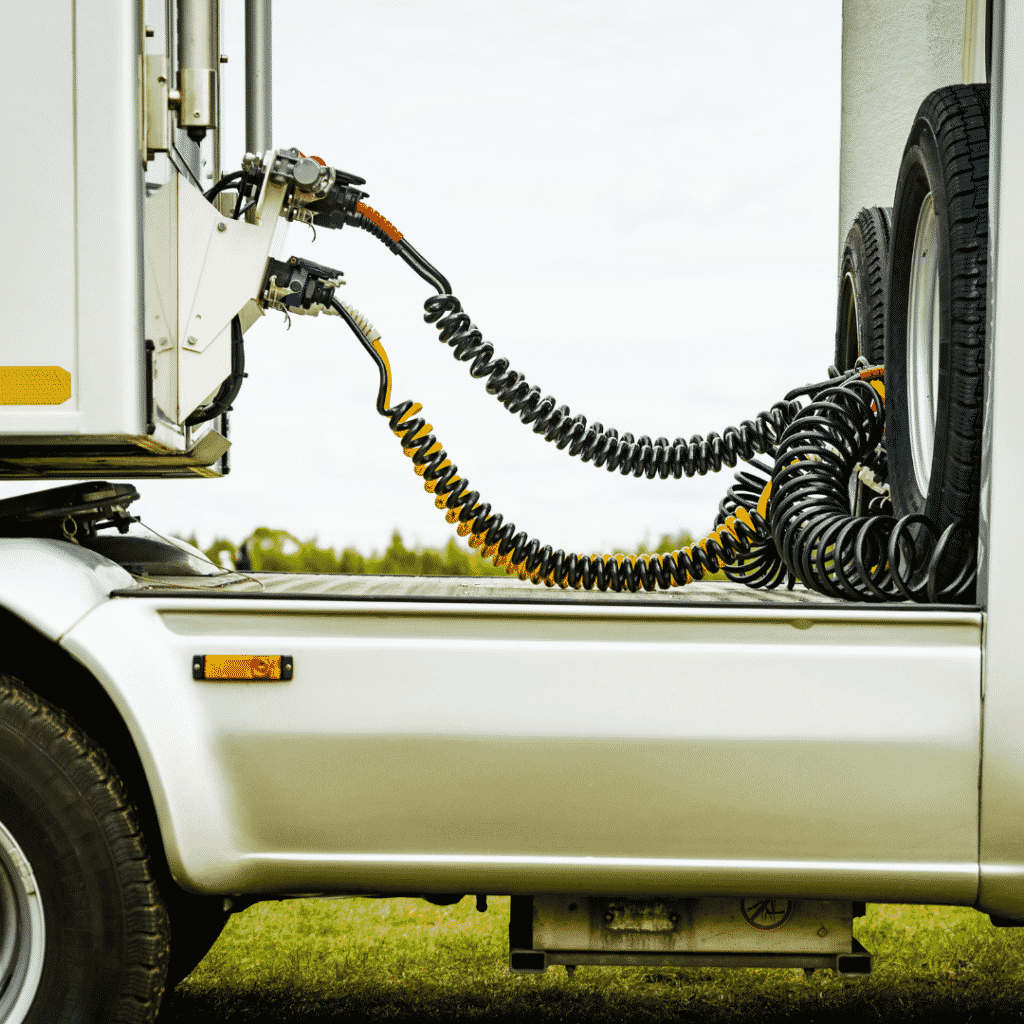Brakes are a semi trucker’s best friend — without them, your big rig would be rolling down the highway at an alarming speed. Semi truck brakes come in many shapes and sizes depending on what type of semi you operate. We will discuss semi truck brake types, functions, and how they work so that you can keep your semi safe on the road and out of a truck accident!
Semi Truck Braking Systems
As a truck driver, you know the importance of having reliable brakes. You never want to be in a situation where your brakes fail while driving down the highway. Semi-truck braking systems are important because they help ensure safe operation for drivers and passengers on board as well as other vehicles around them.
There are three distinct types of brakes in the air brake system.
1. Air Brakes in Semi Trucks
Air brakes are the primary type of braking used in semi trucks. Air operates by compressing air within a cylinder that uses its pressure to stop your rig. When you push the brake pedal, air travels through the brake chambers and activates a mechanism that applies pressure to the drums or calipers to slow or stop the truck.
The appropriate air pressure keeps the emergency brake in place. If the system’s psi drops owing to an air leak or disconnect, the brakes will engage automatically.
As you press the brake pedal, pressure in the system relieves and the brakes deploy gradually. The compressor must build up greater pressure to keep the brakes open as a result of this procedure.
Parts of an Air Brake System in a Commercial Truck
It’s important for truckers to know what parts make up the system, how it works and some common issues associated with these systems should they occur while driving or at any time you aren’t able to safely operate your truck.
Below are the components of an air braking system:
- Air compressor: This component compresses air and sends it through the brake system.
- Brake pedal: When the driver presses this pedal, it sends a signal to the air compressor to start compressing air.
- Brake chambers: These are cylinders located on each wheel that contain pistons. When the brake pedal is pressed, the air pressure forces the pistons out and applies pressure to the brake shoes or pads.
- Brake drums: These are the metal cylinders that the brake shoes press against to slow and stop the truck.
- Brake pads: These are semi-metallic discs that rub against the brake drums to slow and stop the truck.
- Brake caliper: This is a metal housing that surrounds the brake pads and squeezes them against the brake drums to stop the truck.
- Brake piston: This is the part of the brake chamber that pushes the brake shoes against the brake drums.
- Brake rotor: This is the wheel that contains the brake drum and holds it to the axle.
- Brake reservoir: This is a semi-rigid compartment located in the cab of the truck. It holds air at high pressure to keep it ready for use when needed.
- Brake S-cam: This is the mechanism that applies pressure to the brake shoes.
- Brake shoe: This is the part of the brake system that actually contacts the brake drums or pads to stop the truck.
- Air lines: The air line connects the compressor with each of your wheels so that air pressure can evenly distribute.
- Air compressor governor: This is a safety feature that controls the speed at which your truck will stop.
- Air reservoir tanks: These tanks store compressed air and release it when needed to the brake system.
- Drain valves: These valves are in the tanks that release air if needed by safety equipment.
- Pushrod: This is the rod that extends from the brake pedal to each of your wheels.
- Slack adjusters: These components keep air lines in place.
- Return spring: This spring helps the brake pedal return to its original position.
- Master cylinder: This component is responsible for releasing pressure in the system by opening and closing brake chambers.
If there’s a problem with any of these components, it can cause your truck to brake unevenly or not at all. It’s important to know how to troubleshoot these problems and get your truck safely back on the road.
2. Parking Brakes in Semi Trucks
Parking brakes are the primary brakes for holding a vehicle in place. The parking brake is always in use when the ignition key is off. You should check this before you start driving, as it’s possible for your trailer to roll away if this isn’t working correctly.
Both tractor and trailer have parking brakes, usually with a lever located on the floor. The tractor, sometimes also called the “brain” of a semi-truck, is the truck’s front section. The cab is where the driver sits and controls the vehicle. The engine is also part of the tractor. The trailer is the rear portion of a semi-truck that carries freight.
How parking brakes work:
The parking brake lever or handle connects to the wheels via a cable mechanism. When you push down on the lever, it engages the brakes and stops your truck from rolling away while parked.
The trailer’s brakes also engage automatically by an air line that extends between them and the tractor’s cab when it breaks away from its connection with another vehicle. If the air line is cut, the parking brakes on the trailer will not work, so it’s important to always keep this connection intact.
Which system your truck has will depend on its age and make. In either case, it’s important that you know how to use them correctly, so read your owner’s manual carefully.
3. Emergency Brakes in Semi Trucks
Emergency brakes stop your truck as quickly as possible in an emergency. You should only employ them when you absolutely have to stop, as they can cause significant damage to your truck if used incorrectly.
How emergency brakes work:
Emergency brakes come into play via a system of drums and pads that contact the wheel. The pressure is due to a hydraulic cylinder, which activates when you step on the brake pedal.
Semi Truck Brake Maintenance
Just like with any other vehicle, it’s important to keep your semi truck brakes in good working order. Regular maintenance will help ensure that your truck stops safely and smoothly every time. Here are a few ways to keep your brakes in top condition:
Check the air pressure in your brake system at least once a week and adjust if necessary.
- Keep an eye on your brake pads and replace them when they start to wear thin.
- Make sure that all your connections are tight and free of leaks.
- Have your semi truck brakes inspected and serviced regularly
Likewise, there are things you may hear or feel while operating your rig, these may include:
- High-pitch squealing: This is usually an indication that your brake pads are wearing and need replacement.
- Rumbling or vibrating: This could be a sign of a brake imbalance; check them out as soon as possible.
- Pulling: Pulling to one side when you’re applying the brakes could mean that there’s a problem with your wheel bearings, or it may just be an indication that your brakes need adjustment.
- Grinding: This is a serious sign that your brakes need immediate repair.
- Brake noise: If your brakes are making a loud, grinding or squeaking sound, they may need replacement immediately.
Keep in mind that brake repair can be expensive, and it’s much better to prevent damage than have to pay for repairs.
Common Semi Truck Brake Issues
There are a few semi truck braking issues that you may run into while driving, including:
- Brake failure. When your parking brake fails because of wear and tear or improper maintenance, it is the most dangerous problem for semi drivers to face.
- Air brake failure. This is due to a variety of factors, such as leaks in the air line or low air pressure in the tanks.
- Hydraulic brake failure. If your truck has hydraulic brakes, a loss of fluid can cause them to fail.
- Master cylinder failure. The master cylinder is responsible for transmitting pressure from the brake pedal to the brakes themselves. If it fails, you won’t be able to stop your truck.
- Wheel bearing failure. A worn or damaged wheel bearing can cause your truck to pull to one side when you apply the brakes.
- Brake adjustment problems. Incorrectly adjusted brakes can lead to all sorts of braking issues.
- Misaligned brake shoes. When the brake shoes do not align properly, it can cause the truck to vibrate or pull to one side when you apply the brakes.
- Brake lock. This is because of a number of things, such as air in the lines, low brake fluid or a malfunctioning brake valve.
As you can see, semi truck brakes are a complex system that requires regular maintenance to keep them functioning properly. By knowing what to look for and how to take care of your brakes, you can avoid many common problems.
Read more: Semi Truck Brake Problems, Symptoms, & What to Do During Brake Failure
If your semi truck needs brake assistance in Wyoming or Utah, contact Bozz Towing, your reliable trucking company. We have one-stop diesel repair shops and towing services to get you back on the road as quickly as possible. Stay safe out there on the open road!
Related Articles:

